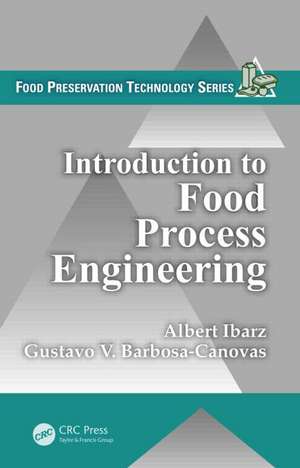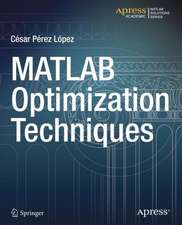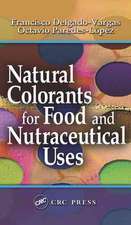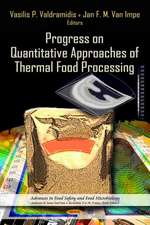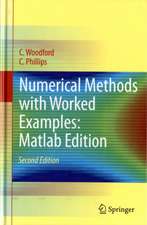Introduction to Food Process Engineering: Food Preservation Technology
Autor Albert Ibarz, Gustavo V. Barbosa-Canovasen Limba Engleză Hardback – 10 apr 2014
Introduction to Food Process Engineering covers the fundamental principles necessary to study, understand, and analyze most unit operations in the food engineering domain. It was conceived with two clear objectives in mind: 1) to present all of the subjects in a systematic, coherent, and sequential fashion in order to provide an excellent knowledge base for a number of conventional and unconventional processes encountered in food industry processing lines, as well as novel processes at the research and development stages; 2) to be the best grounding possible for another CRC Press publication, Unit Operations in Food Engineering, Second Edition, by the same authors. These two books can be consulted independently, but at the same time, there is a significant and welcomed match between the two in terms of terminology, definitions, units, symbols, and nomenclature.
Highlights of the book include:
- Dimensional analysis and similarities
- Physicochemistry of food systems
- Heat and mass transfer in food
- Food rheology
- Physical properties
- Water activity
- Thermal processing
- Chilling and freezing
- Evaporation
- Dehydration
- Extensive examples, problems, and solutions
Preț: 568.92 lei
Preț vechi: 773.23 lei
-26% Nou
Puncte Express: 853
Preț estimativ în valută:
108.86€ • 113.66$ • 90.10£
108.86€ • 113.66$ • 90.10£
Carte tipărită la comandă
Livrare economică 04-18 aprilie
Preluare comenzi: 021 569.72.76
Specificații
ISBN-13: 9781439809181
ISBN-10: 1439809186
Pagini: 722
Ilustrații: 256 black & white illustrations, 100 black & white tables
Dimensiuni: 178 x 254 x 38 mm
Greutate: 1.36 kg
Ediția:New.
Editura: CRC Press
Colecția CRC Press
Seria Food Preservation Technology
ISBN-10: 1439809186
Pagini: 722
Ilustrații: 256 black & white illustrations, 100 black & white tables
Dimensiuni: 178 x 254 x 38 mm
Greutate: 1.36 kg
Ediția:New.
Editura: CRC Press
Colecția CRC Press
Seria Food Preservation Technology
Public țintă
Students and instructors in food engineering and food processing courses; food processing engineers; Quality control and safety managers in food processing and food manufacturing operations; US FDA and USDA regulatory personnel.Cuprins
Introduction to Unit Operations. Unit Systems, Dimensional Analysis, and Similarities. Introduction to Transport Phenomena. Momentum, Energy, and Mass Transfer. Macroscopic Balances. Physicochemistry of Food Systems. Mass Transfer. Air–Water Interactions. Water Activity. Mechanical Properties. Thermal Properties of Food. Optical Properties of Foods. Rheology of Food Products. Electrical Properties of Foods. Physical and Chemical Properties of Food Powders. Heat Transfer by Conduction. Heat Transfer by Convection. Heat Transfer by Radiation. Refrigeration. Thermal Processing of Foods. Emerging Technologies in Food Processing. Concentration. Dehydration. Dehydration. Hygienic Design of Food Processes. Packaging of Foods. Appendix. References. Index.
Notă biografică
Albert Ibarz, Gustavo V. Barbosa-Canovas
Descriere
This text introduces the basic principles of food engineering, providing readers with a good understanding of what food process engineering encompasses. The text begins with an overview of basic concepts of unit operations, familiarizing readers with fundamental ideas regarding processes. It then reviews key topics in food process engineering, covering the physical properties of food, traditional fluid mechanics, and heat transfer. The text examines transport phenomena, momentum, energy, and mass balances, as well as macroscopic balances. It also discusses food processing and food preservation technologies and food packaging.
